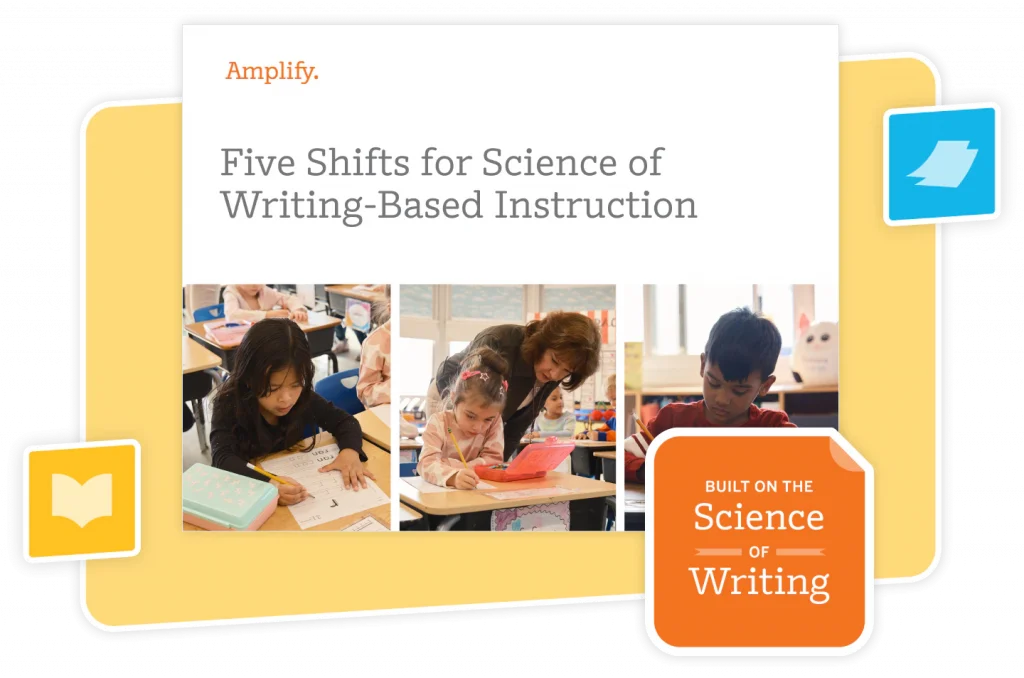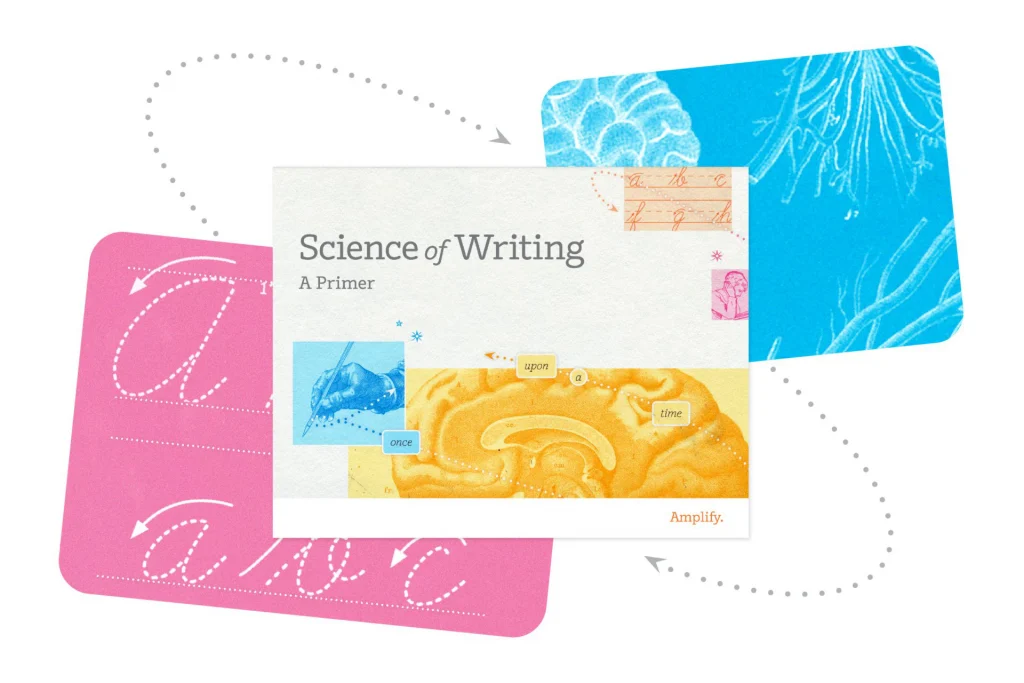
There are plenty of creative and effective ways to inspire and teach students to write. Many teachers tap into their own experiences, insights, and talents to help students learn how to communicate with the written word.
And there’s also science behind how kids become effective written communicators. Just as the Science of Reading has transformed literacy development and instruction, the Science of Writing offers research-backed strategies to help students learn to write with clarity and confidence.
Here’s how the Science of Writing can help you support student learning.
The Science of Reading and Writing, defined
The Science of Reading represents the large and ever-growing body of research into how students best learn to read—and, therefore, how best to teach them. (You might call it the Science of teaching reading.) It emphasizes the principle that kids don’t learn to read just by being immersed in words on pages around them. Rather, instruction must be structured, explicit, and systematic.
Likewise, the Science of Writing is a research-based approach to effective instruction that emphasizes structured, explicit, and systematic methods to help students develop strong and confident writing skills. While the Science of Reading focuses on how students decode and comprehend text, the Science of Writing addresses how students construct and communicate meaning through written language.
Reading and writing are deeply connected. Strong reading skills support strong writing skills, and vice versa. A simple example: When students are expressly taught to identify the characteristics and purpose of a given text structure (say, the presentation of a problem and its solution) while reading, they are better able to replicate that structure in their writing; they can continue to improve their writing by analyzing additional and more advanced texts with that structure.
A Science of Reading curriculum and Science of Writing curriculum—that is, a comprehensive literacy curriculum—must integrate both, ensuring that students are not only able to understand texts but also to articulate their own thoughts clearly and effectively. By aligning high-quality instructional materials with these proven frameworks, educators can significantly enhance student learning outcomes.
How to bring the Science of Writing into your core curriculum
Effective writing instruction requires a comprehensive approach that addresses transcription skills and composition skills, both of which require explicit teaching and practice. If you’re looking to improve writing instruction in your classroom or district, there are five critical shifts you need to consider. Below, we’ll give you a peek at two of them. Note that we’re not asking you to add more to your plate every day; each of these approaches will actually allow you to sunset some others.
1. Develop both transcription and composition skills, not one or the other.
Skilled writing is a product of transcription skills (such as handwriting and spelling) and composition skills (such as developing and expressing ideas). Both are best taught through an integrated reading and writing approach that recognizes reading and writing as reciprocal processes.
By working on the development of both skills, you’ll be able to shift away from:
- Focusing exclusively on handwriting and spelling at the expense of composition practice.
- Free writing time without explicit guidance or goals.
2. Teach transcription skills in tandem with phonics, not in isolation.
As you know, reading and writing are reciprocal and strengthened when taught together. Some specifics:
- Transcription skills—such as handwriting and spelling—are best taught and practiced in alignment with a phonics scope and sequence.
- Research shows that building automaticity in handwriting supports the neural pathways associated with reading.
By working on transcription and phonics in tandem, you’ll be able to shift away from:
- “ABC” handwriting instruction, focusing instead on instruction aligned to sound-spellings students are learning.
- Asking students to spell words without explicit instruction in the sound-spellings.
Making this shift means moving away from phonics instruction that occurs on an “as-needed” basis and ensuring that all students receive the foundational skills necessary for fluent reading and writing.
These are just two of the essential shifts you can make to transform your literacy, and specifically writing, instruction. By focusing on evidence-based strategies, educators can make sure that students receive the support they need to become strong, independent writers.
More to explore
Want to learn all five key shifts and how to implement them in your classroom? Download our full guide to discover how the Science of Writing can help improve student learning and long-term literacy success.
Also:
- Download: Science of Writing: A Primer
- Download: Our elementary writing bundle
- Webinar series: The Science of Reading: Writing the Next Chapter
